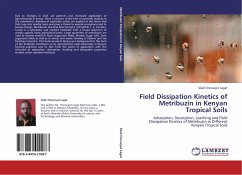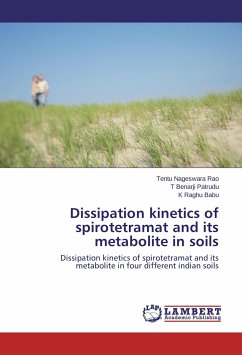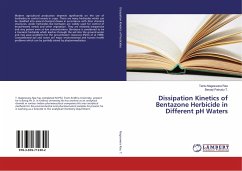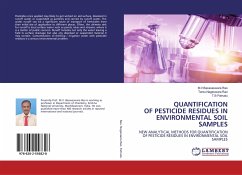Due to changes in land use patterns and increased application of agrochemicals in Kenya, there is concern of the fate of pesticide residues in the catchments. Residues of pesticides which are applied in the farms find their way into nearby rivers and pose a threat to aquatic ecosystems and to human beings. Metribuzin (4-amino-6-tert-butyl-4, 5-dinylthio 1, 2, 4 triazin-5-one) is a systematic and contact herbicide with a broad spectrum of activity against many agricultural pests. Large quantities of metribuzin are used to control weeds in Nzoia sugarcane fields, Mumias Sugar belt, Sony sugarcane fields as well as in wheat and maize farming in Eldoret and tea farming in Kericho. This book presents theory as a background to the facts of the herbicide metribuzin as an agrochemical used extensively in Kenyan farming practices and its fate from the point of application with the influence of adsorption, desorption, leaching and dissipation properties studied under standard methods.
Bitte wählen Sie Ihr Anliegen aus.
Rechnungen
Retourenschein anfordern
Bestellstatus
Storno








